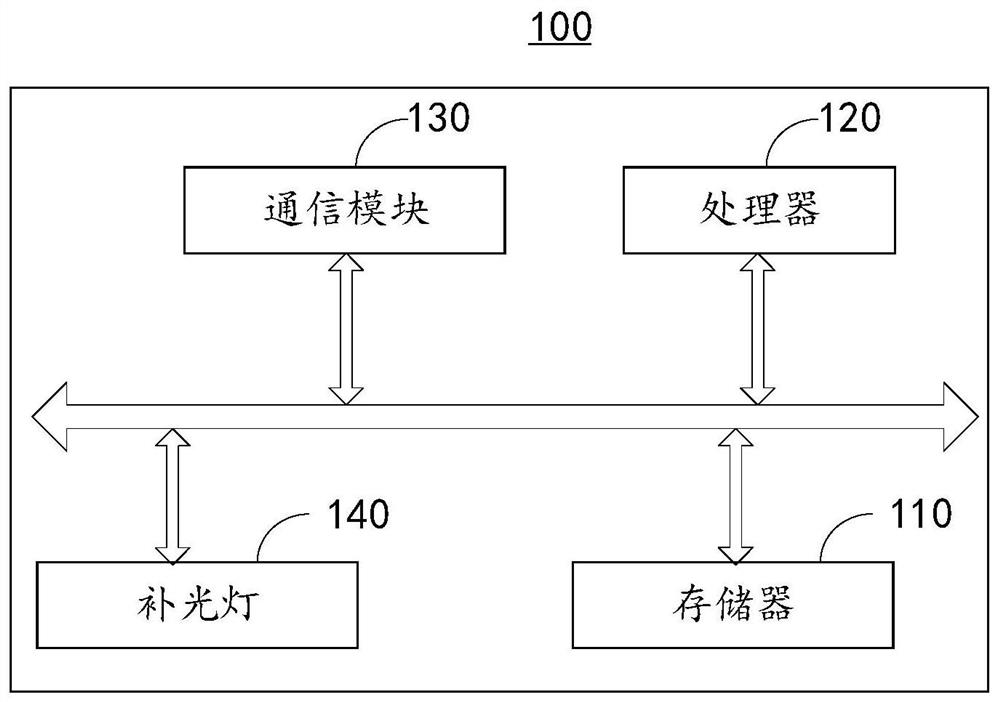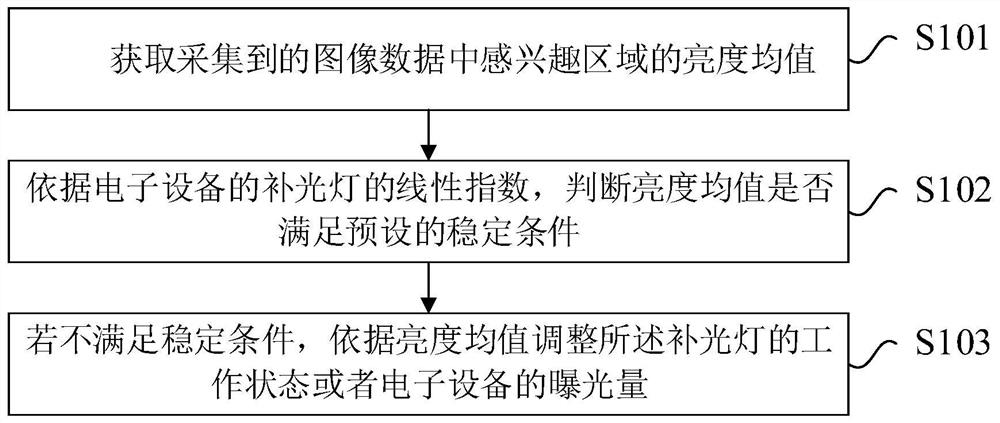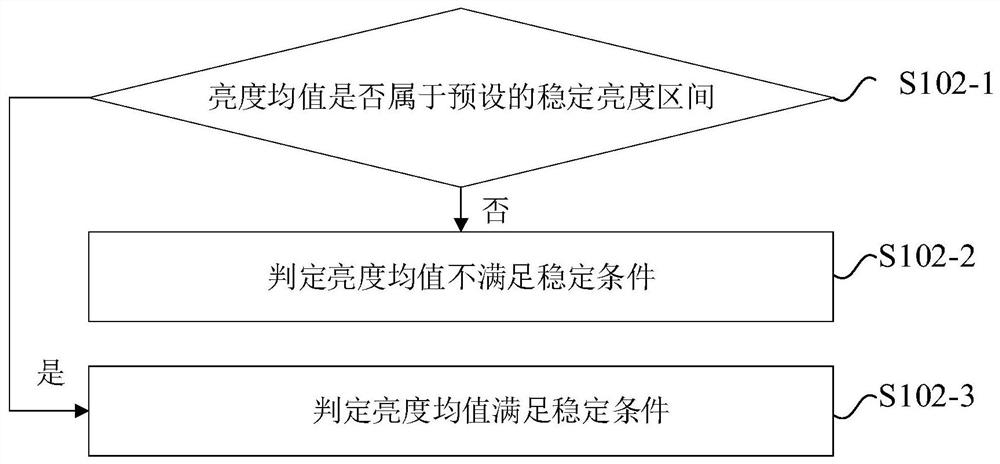Image supplementary light adjustment method, device and electronic equipment
An adjustment method and technology of electronic equipment, applied in image communication, television, electrical components, etc., can solve the problems of inflexibility, repeated flashing, and inability to ensure that the brightness of the area of interest meets the identification requirements, and achieve flexible fill light and avoid repeated flashing. Effect
- Summary
- Abstract
- Description
- Claims
- Application Information
AI Technical Summary
Problems solved by technology
Method used
Image
Examples
no. 1 example
[0040] Please refer to figure 2 , figure 2 The image supplementary light adjustment method provided by the embodiment of the present invention is shown. The above-mentioned image supplementary light adjustment method may be applied to the above-mentioned electronic device 100 . Such as figure 2 As shown, the above image supplementary light adjustment method includes the following steps:
[0041] Step S101, acquiring the average brightness value of the region of interest in the collected image data.
[0042] The above-mentioned electronic device 100 continuously collects images of the monitored area, and puts the image data into a queue to be processed when the image data of the region of interest is collected. The queue to be processed is used to store image data with regions of interest. Optionally, the acquired image data with the region of interest is sequentially buffered in the queue to be processed according to the order of acquisition time. After the queue to be ...
example 1
[0087] S1. A human face image area appears in the image data collected by the electronic device 100, and the image data is stored in a queue to be processed.
[0088] S2, according to the preset time period, sequentially calculate the average brightness value of the faces appearing in each piece of image data in the queue to be processed.
[0089] S3. After superimposing the average brightness value of the faces appearing in each image data in the queue to be processed, divide by the number of images in the queue to be processed to obtain the corresponding average brightness value.
[0090] S4, judging whether the average brightness value belongs to a preset stable brightness interval. If not, enter the intelligent adjustment mode, that is, the process enters step S5. If yes, enter the brightness stabilization mode, that is, the process enters step S11.
[0091] S5. If the average brightness value is greater than the upper limit of the preset stable brightness interval, calc...
example 2
[0099] D1, a human face image area appears in the image data collected by the electronic device 100, and the image data is stored in a queue to be processed.
[0100] D2, according to the preset time period, sequentially calculate the average brightness value of the faces appearing in each piece of image data in the queue to be processed.
[0101] D3, after superimposing the average brightness value of the faces appearing in each image data in the queue to be processed, dividing by the number of images in the queue to be processed, to obtain the corresponding average brightness value.
[0102] D4, judging whether the average brightness value belongs to the current stable brightness interval. Wherein, the current stable brightness interval may be a preset stable brightness interval, or may be an extended brightness interval. The extended brightness interval is an extended brightness interval based on a preset stable brightness interval.
[0103] If not, then enter the intelli...
PUM
 Login to View More
Login to View More Abstract
Description
Claims
Application Information
 Login to View More
Login to View More - R&D
- Intellectual Property
- Life Sciences
- Materials
- Tech Scout
- Unparalleled Data Quality
- Higher Quality Content
- 60% Fewer Hallucinations
Browse by: Latest US Patents, China's latest patents, Technical Efficacy Thesaurus, Application Domain, Technology Topic, Popular Technical Reports.
© 2025 PatSnap. All rights reserved.Legal|Privacy policy|Modern Slavery Act Transparency Statement|Sitemap|About US| Contact US: help@patsnap.com



